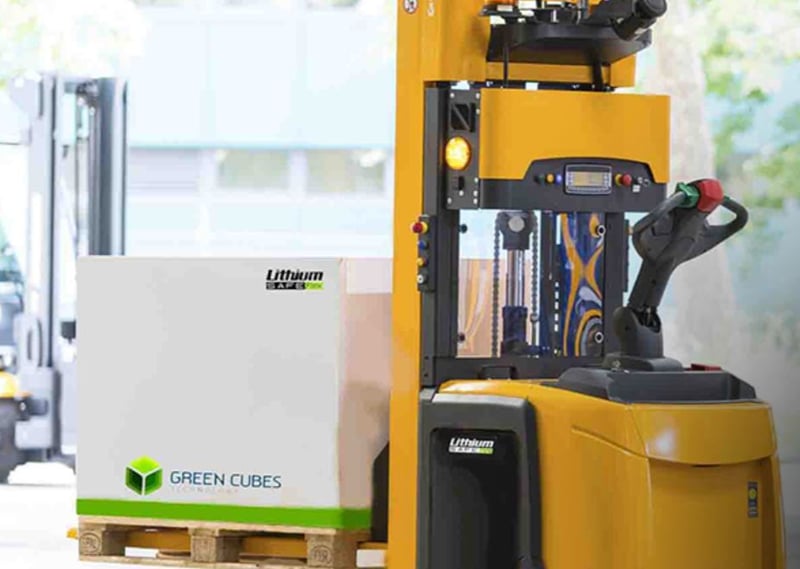
The Great Battery Debate: Is Lead-Acid or Lithium-Ion more sustainable?
As climate change continues, environmental sustainability remains a hot topic. So, it’s no surprise that sustainability is at the forefront of battery technology advancement.
But with these increased efforts to be “green” come common myths about what technology is, in fact, sustainable. And debates are on the rise about which battery system is more sustainable – traditional lead-acid or the growing lithium-ion. To make the most educated decision, top factors such as recyclability, energy efficiency, and resiliency should be considered.
Recycling processes aren’t always safe
First, let’s address recycling. Lead-acid battery providers claim their products are 99 percent recyclable, but the process damages the environment. Evidence shows that smelting, which is used to reclaim the lead in lead-acid batteries, harms water, soil, vegetation, wildlife, and humans. Further, smelting produces silicon dioxide and slag – a mixture of toxic metal oxides. Today, many smelting factories have been moved outside of the United States because of the harmful chemicals produced. For example, the Environmental Protection Agency (EPA) still finds samples exceeding the acceptable levels of cadmium, nickel, and lead in the Big River and its tributaries in Missouri where two smelters operated until the early 1900s.
Lithium-ion batteries have a longer cycle life than lead-acid batteries. In fact, when lithium-ion batteries come to their end-of-life cycle, they are repurposed – giving them a second life. They can run on a three-step recycling program: recover, reuse and recycle. After a lithium-ion battery is recovered, it can be reused and repurposed into smaller power storage systems that include solar power and grid storage. After the second life, recycling happens when the cells are refilled and sent back to the manufacturer to build new batteries. And additionally, a lead-acid battery requires more raw material than a lithium-ion battery to produce the same amount of energy.
Differences in energy efficiency matter
The second sustainability consideration is differences in energy efficiency between lead-acid and lithium-ion batteries. The lead-acid battery is not fully efficient at storing energy – the higher the rate of charge or discharge, the lower the efficiency. Since lead-acid batteries only charge to 80 percent under constant current, the overall charging process is slow. These batteries become damaged when charged under high ambient temperatures or when charged incompletely.
On the other hand, lithium-ion batteries charge rapidly when fully drained and can be topped off without suffering damage during brief inactivity. This allows businesses to minimize the amount of space required for charging, while keeping fewer spare batteries on hand. And more space for products leads to higher throughput. In addition, lithium-ion batteries perform consistently, delivering the same voltage at 10 percent or 100 percent.
Lithium-ion batteries have a one-hour opportunity charging benefit. So, during an eight-hour shift, charging the battery during short breaks and mealtime keeps it running all day. This means only one battery is required for each piece of equipment, whereas lead-acid batteries typically have a charge, discharge, and equalize process that require three batteries per piece of equipment for a company running three shifts.
Getting real about resiliency
The last sustainability factor surrounds resiliency and safety of each battery type. The two types of lead-acid batteries are (1) flooded and (2) valve-regulated lead-acid (VRLA). Although flooded batteries are the least expensive, they are also the least resilient to damage. They require significant daily care and maintenance, usually from a dedicated employee. VRLA’s require less maintenance but have a short cycle life compared to their flooded counterpart, and much shorter than lithium-ion.
Lithium-ion batteries are maintenance-free: no watering, equalizing, or swapping to keep them running. Therefore, there’s no risk or harm if the battery is dropped, no employee dedicated to their maintenance, and no storage needed for extra batteries.
Sustainability contributes to competitiveness
It’s imperative to consider how all types of sustainable power sources contribute to the future. Do your own research on the myths and facts surrounding lead-acid and lithium-ion battery recycling, energy efficiency, resiliency, and cost before deciding to stay with what you have or switching to a newer motive power source to run your fleet.
You’ll gain confidence in your overall strategy to stay competitive and can determine how your choice helps the global environment. Technologies change. Environments change. A company should consider whether it, too, can or should change, not only to be more sustainable but to contribute to its bottom line.
About Green Cubes Technology
Green Cubes Technology is a designer and manufacturer of lithium power systems. Utilizing proven hardware and software platforms to build the most reliable lithium battery systems in the industries they serve. With over 30 years of successful designs by expert engineers, Green Cubes Technology ensures each system will exceed the safety and performance it was designed to meet. Green Cubes Technology is a global company employing teams in four global locations. For more information visit www.greencubestech.com.









